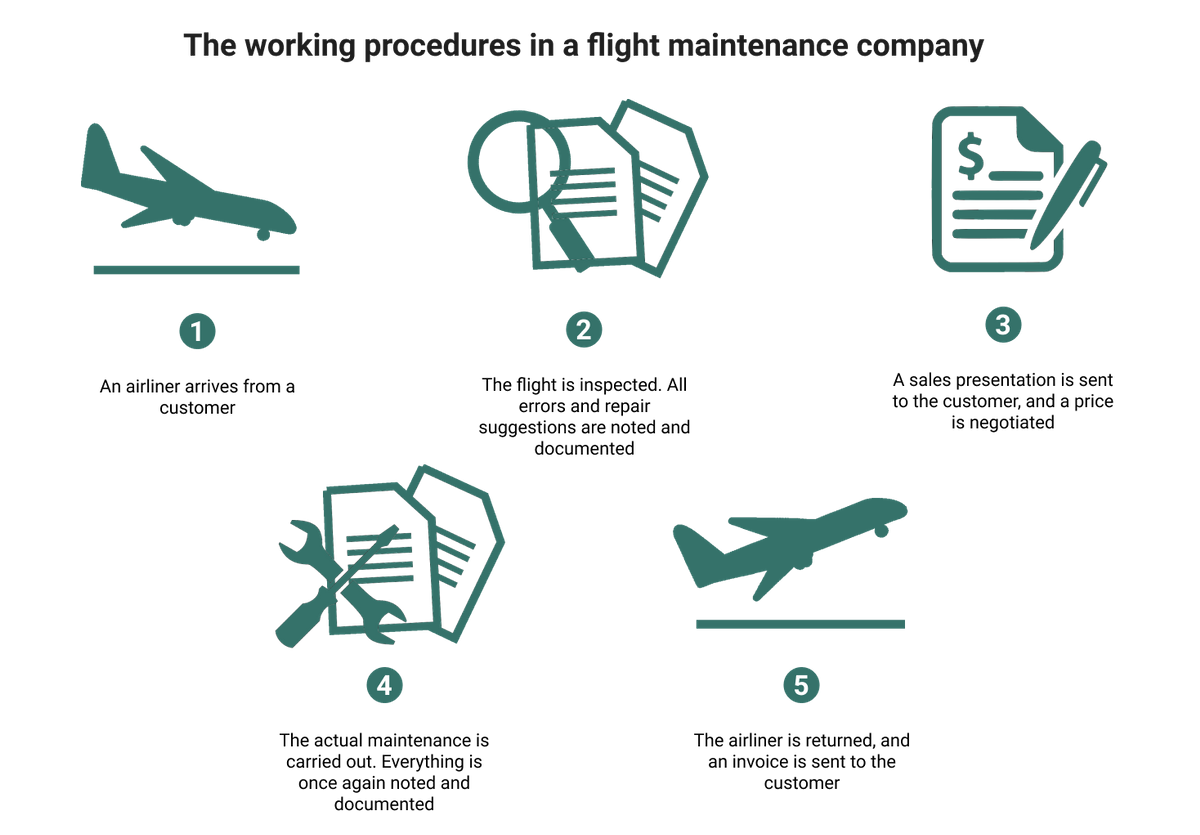This article is part of a series on digitalization in the supporting industries of aviation, aerospace and defence. We investigate why manual work processes dominate them with only a little automation, and why the time is ripe for joining the fourth industrial revolution.
RepAir: A (fictional) flight maintenance company
If you haven’t read our first article, you might want to start there, since we described how industrial companies in aviation, aerospace and defence differ from many others in a couple of essential parameters.
If you have, then let us dive deeper and take a random flight maintenance company invented for the occasion and call them RepAir. Their working procedures can roughly be divided into five sections: First, they receive an airliner from a customer. Next, they inspect it in detail and document everything they think needs to be repaired. Thirdly they send a sales representative to the customer to negotiate a price. When things are settled, they carry out the actual maintenance. And finally, RepAir dispatch the airliner and send the final invoice. This might not seem so complicated, but don’t be fooled by the simplifications just made.

“They have to oblige to some extensive requirements issued by different governmental authorities. Maintenance of airlines must follow a long series of regulations, and on top of that, you will have to document that those regulations and requirements were met during the maintenance. This will provide the customer with certainty that everything was done properly, but it is also necessary to do so since authorities must be allowed to audit the maintenance at any time they wish,” says Rasmus Bertram, Co-founder of and CEO in Whyyy.
Guidelines for everything
The aviation industry is flooded with manuals. You will find one for literally everything. Every single nut comes with a set of guidelines that must be followed in terms of installation and maintenance. Furthermore, every single component itself needs to satisfy a lot of requirements and needs to be approved for usage through a lot of additional certificates. This is what makes RepAir’s airliner maintenance rather complicated.
“When they do the inspection, employees will take pictures and make a textual description of every single crack or defect found on the airliner, and then add a thorough note on how to conduct the repair along with which manuals to follow. All of this is stored in a document-based system, allowing other employees to put together a report for the customer. During the process inspectors time and time again have to sign that guidelines and manuals were indeed followed. After that, auditors will do the same,” Rasmus Bertram explains, and continues:
“The requirements from authorities are so wide-ranging that there is no chance something will not be done properly. And there is absolutely no way to automate it. The overall process doesn’t take three days, but three months. It’s not a question of three components. No, it’s closer to three thousand components. And it’s not just a few rules you must follow. We are talking about a couple of thousand pages of guidelines. Overall, you have a hundred thousand different units and approaches when maintaining an airliner,” he says.



